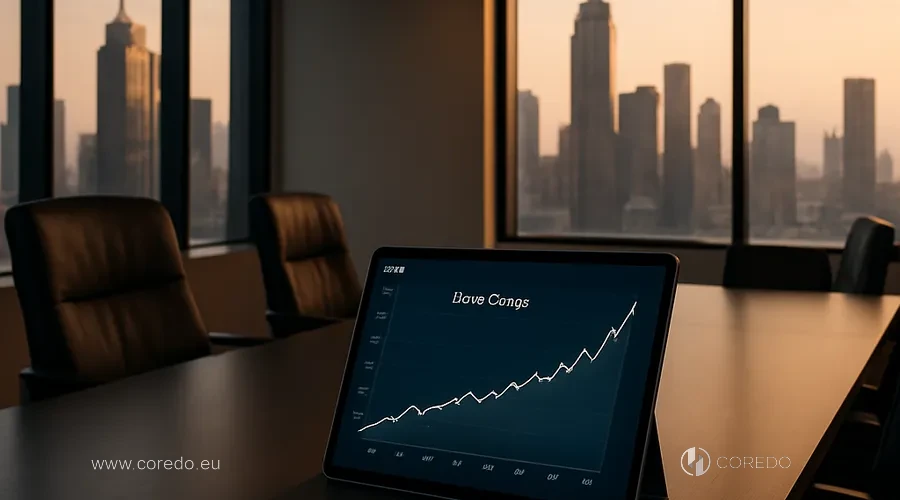The modern market offers entrepreneurs and investors a wide range of legal structures for investment funds. The most in demand are SPV (Special Purpose Vehicle), unit investment funds (PIF), closed-end investment funds (ZPIF) and specialized forms, such as ZISIF. The choice of structure determines not only the tax burden and level of asset protection, but also the possibilities for scaling, attracting investors, risk management and compliance with international standards.
What is an SPV and why is it needed?
An SPV is a legal entity created to implement a specific investment task or to structure a transaction. In COREDO’s practice COREDO SPVs are often used to isolate risks for individual projects, to raise financing secured by specific assets or to create a platform for venture investments.
PIF and ZPIF: differences and types of funds
In a PIF, unit holders acquire a share (unit) in the overall asset pool, and management is carried out based on rules of trust management (PDU). Open PIFs provide high liquidity — a unit can be sold at any time and the entry threshold is minimal. For long-term and complex investment strategies, a closed-end investment fund (ZPIF) becomes the optimal instrument.
A ZPIF is characterized by a fixed term, a limited number of unit holders and the ability to invest in less liquid assets, real estate, venture projects, private companies and non-publicly traded securities. The entry threshold into a ZPIF is usually higher, and the liquidity of investment units is limited: they can be realized only at the end of the fund’s term or on the secondary market.
ZISIF and other forms of investment funds
Such structures are widespread in Luxembourg, Cyprus, Estonia and the Czech Republic. They allow flexible asset management, the use of mixed investment strategies and minimizing the tax burden through special regimes.
SPV or ZPIF: how to choose a structure?
| Parameter | SPV | ZPIF |
|---|---|---|
| Legal status | Legal entity | Asset complex under trust management |
| Liquidity | Limited | Limited (exit at maturity or on the secondary market) |
| Term | Flexibly determined by the founder | Fixed, with possibility of extension |
| Taxation | Depends on the jurisdiction | Often a preferential regime, tax optimization through ZPIF |
| asset management | Managed by the founder or the board of directors | Management company, specialized depositary, appraiser |
| Risks | Isolation of project risks | Diversification, capital protection, regulator oversight |
ZPIF allows implementing complex investment strategies, integrating management of real estate, venture projects, and private companies. An SPV, on the other hand, is suitable for one-off transactions, securitization, managing individual assets, or time-limited projects.
In one of COREDO’s cases for an international development group a combined structure was implemented: an SPV was used to acquire and manage individual real estate properties, while a ZPIF was used to pool investments and distribute income among unitholders taking tax benefits into account.
Registration and support of an investment fund

The procedure for registering an investment fund varies significantly depending on the jurisdiction. In EU countries (for example, Luxembourg, Cyprus, Estonia) registering a fund requires approval of constitutional documents, trust management rules, engaging licensed management companies, a specialized depositary and a registrar of investment funds. In the United Kingdom there is an FCA licensing system, and in Singapore: MAS licences for management companies and funds.
Therefore, when registering an investment fund it is critically important to ensure the legal structuring of capital taking into account AML, KYC and the international standards of FATF.
Solutions implemented by the COREDO team in the Czech Republic and Estonia have shown: the integration of a professional depositary and an independent asset valuer minimizes risks and increases confidence from investors and regulators.
Asset management through ZPIF

Organizing asset management in a ZPIF requires a clearly structured governance framework: a management company, a specialized depository, a registrar, and an independent asset appraiser. Each element plays its role: the management company is responsible for the investment strategy, the depository for safekeeping and accounting of assets, the registrar for maintaining the unit-holders’ register, and the appraiser for regular valuation of assets.
A ZPIF allows investing in a wide range of assets: real estate as an asset, venture projects, private companies, and non-tradable securities. In COREDO’s practice, mixed investment funds are often implemented, combining several asset classes to diversify and increase the ROI of investments through a ZPIF.
How do closed-end unit investment funds (PIFs) work?

The entry threshold for a closed-end PIF is usually higher than for open-ended funds, which is due to the focus on qualified investors. Nevertheless, for certain strategies it is allowed to create a closed-end PIF for a single founder, which is in demand when structuring private capital or family offices.
Transfer of units to third parties is possible only with the consent of the management company or within the established rules. The fund’s term is fixed, but an extension of the closed-end PIF’s term or early liquidation of the closed-end PIF is possible upon the occurrence of certain conditions specified in the Trust Management Rules (PDU).
COREDO’s practice shows: well-drafted PDU allows avoiding most disputes and ensures the fund’s stability in the long term.
Tax optimization and investment protection through ZPIF

This allows structuring transactions through a ZPIF effectively, minimizing tax risks and providing legal protection for investments.
The COREDO team has repeatedly executed projects to structure transactions through ZPIFs for investments in private companies, real estate and venture projects.
Investment risks through a ZPIF are minimized thanks to asset diversification, independent valuation and strict oversight by the management company and regulators. An example from COREDO’s practice: for a fund investing in unlisted securities and startups, an internal compliance system and regular audits were established, which made it possible to attract institutional investors and reduce the cost of borrowed capital.
Key findings and recommendations for investors and entrepreneurs

- SPV – optimal for one-off transactions, securitization, and managing individual assets. ZPIF: a tool for long-term investments, trust management, tax optimization and capital protection.
- The choice of fund structure depends on investment goals, asset composition, liquidity requirements, investor makeup, and jurisdiction.
- Registering an investment fund requires careful legal packaging of capital, compliance with AML and KYC, and the engagement of professional management companies and a specialized depository.
- To minimize risks, it is important to develop rules of trust management, ensure regular asset valuation and operational transparency.
- When choosing a legal partner, pay attention to experience in international projects, knowledge of jurisdictional specifics, and the availability of comprehensive solutions for the registration, licensing, and support of investment funds.
SPV vs PIF vs ZPIF: comparison
| Parameter | SPV | PIF (open-ended) | ZPIF (closed-ended) |
|---|---|---|---|
| Legal status | Legal entity | Asset pool | Asset pool |
| Liquidity | Limited | High | Limited |
| Term | Flexible | Indefinite | Fixed-term |
| Taxation | Depends on jurisdiction | Depends on jurisdiction | Often preferential |
| Management | Founder/directors | Management company | Management company, depository |
| Minimum entry threshold | Low | Low | Medium/High |
Glossary of key terms
- PDU (Rules of Trust Management): the fund’s primary document defining unitholders’ rights, the procedure for management and liquidation.
- Trust management: the transfer of assets to the management of a professional company on the basis of the PDU.
- Specialized depository: an independent organization responsible for the safekeeping and accounting of the fund’s assets.
- Investment fund registrar: maintains the register of unitholders, ensuring transparency of operations.
- Qualified investor: an investor who meets the established criteria for experience, capital, and knowledge.
- Non-tradable securities: instruments not traded on an exchange (e.g., stakes in private companies).
- Interval mutual fund (IMF): a fund in which a unit can be redeemed only at specific intervals.
Frequently Asked Questions
-
How to choose the optimal legal structure for an investment fund?
The choice depends on investment objectives, asset composition, liquidity requirements and tax optimization. For one-off projects an SPV is suitable; for long-term and diversified ones: ZPIF or ZISIF.
-
What are the requirements for registering a fund in the EU and Asia?
Registration with the regulator is required, approval of the offering document (PDU), engagement of a management company, a depositary and a registrar, as well as compliance with AML/KYC.
-
How to ensure legal protection of investments?
Use a multi-level infrastructure: a management company, a specialized depositary, an independent registrar, regular asset valuation, transparent trust management rules.
-
What risks are associated with investments through a ZPIF?
Limited liquidity, the need for strict compliance with regulatory requirements, risks in asset valuation. COREDO’s practice shows that a sound structure and compliance minimize these risks.
-
What is the minimum entry threshold for a ZPIF?
Depending on the jurisdiction and the fund’s strategy, the threshold can range from several thousand to hundreds of thousands of euros.
If you are planning to launch an investment fund, structure capital or optimize taxation, the COREDO team is ready to offer comprehensive solutions that take into account the specifics of your business and jurisdiction. A reliable legal infrastructure is the foundation of long-term success in the world of investments.